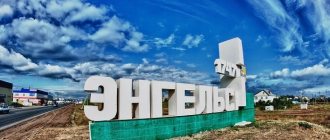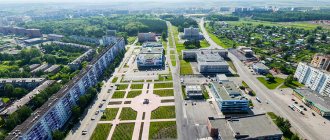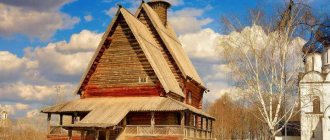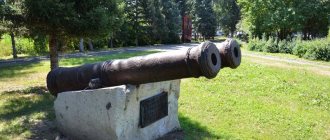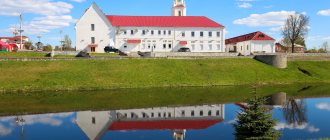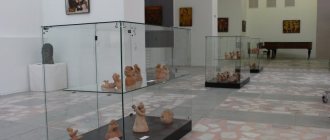Interesting places in Balakovo
Balakovo will appeal to lovers of sports and active recreation. The city has facilities where both adults and children can exercise.
Children's park
- Coordinates on the map: 52.009683, 47.787543.
The largest playground for children is located in the city center. The children's park is the best place for walks and fun games in the fresh air. While the kids are having fun on the slides and attractions, adults can sit on comfortable benches or in covered gazebos.
The main attraction of the park is the massive Ferris wheel, which offers a wonderful panorama of the city. There is also a workout area for visitors, a “Strawberry Kingdom” honor board, and a Summer Stage. There is also a small beach nearby.
The stadium "Trud"
- Coordinates: 52.010013, 47.764304.
The central city stadium is the sports heart of Balakovo. Various sporting events, football matches, local, national and even international competitions take place here. The main purpose of the site is competitions in a rare sport for Russia - speedway, or track racing on motorcycles.
Motorcycle sport began to develop in the region in the 60s of the last century. In 1965, a stadium was built in Balakovo, three years later the city had its own speedway club, Turbina, which exists to this day. Turbina coaches have raised more than one generation of talented racers. During its glorious history, the club became the champion of the USSR eight times and won the All-Russian competitions three times.
Today the stadium accommodates more than 10,000 fans, including 2,000 seats. The structure is regularly rebuilt and repaired, making the stands and tracks more comfortable and technologically advanced. Training and competitions do not stop even in winter: with the arrival of frost, the ice speedway season begins.
Palace of Culture
- Address: st. Leonova Embankment, 1A.
This is probably the main leisure facility in Balakovo that you can visit next to the Children's Park. There are all conditions for children's leisure time, various clubs are organized - with dancing, games and other fun, useful things.
And the Balakovo Palace of Culture often hosts various cultural events, and at a fairly high level. Regional stars often perform here. And on New Year's Day, matinees are usually held here.
Cinema "Mir"
- Address: Trnavskaya st., 1A.
Of course, Balakovo couldn’t do without a cinema - it’s called “Mir” here and occupies a rather old building, which, however, was recently restored. The interior has also undergone renovation work - now it is cozy and quite comfortable, as reviews say.
Many claim that this is a movie from their childhood - and this is true, since the institution has grown up for more than one generation. The cinema hall is good, clean, but the prices cannot be called low. Before watching a movie, there is a place to buy popcorn or coffee, as well as a good snack.
National Village of the Peoples of the Saratov Region
National Village of the Peoples of the Saratov Region. 2
On Sokolova Mountain, not far from Victory Park, there is a large ethnographic complex. It is an interactive open-air museum, where visitors can get acquainted with the customs, traditions and life of different nationalities. The culture, architecture and cuisine of many peoples inhabiting the Saratov region are presented here.
On the territory of the ethnic complex you can see a Russian and Korean farmstead, a Ukrainian farmstead, Kazakh and Bashkir yurts, Georgian and Armenian houses, an Uzbek teahouse, Tatar and Mordovian estates, and other national buildings. Here you can view exhibits, taste interesting national dishes and listen to songs of different nations.
Address: National Village of the Peoples of the Saratov Region, Saratov, Russia.
Children's park
Children's park. 2
The founding date of the Saratov Children's Park is considered to be 1936. It was created on the site of Poltava Square, which was developed in 1880. A little later, a church was built here and a thousand trees were planted. Two years before the opening of the park, the temple was demolished, and a cinema, football field, pond and tennis court were installed on this territory.
Today, the Children's Park has a cafe, playgrounds, a library and a sports town. There is a fountain, a karting center and a shooting school. In winter, the football field turns into a skating rink. The Vladimir Church was rebuilt on the territory of the park, which was consecrated in 2010.
Address: Children's Park, st. Pugacheva E. I, Saratov, Russia.
Saratov Circus named after. Nikitin brothers
Saratov Circus named after. Nikitin brothers. 1
In 1876, a round building appeared on Mitrofanovskaya Square in Saratov under the sign “The First Russian Circus of the Nikitin Brothers.” This circus became the second stationary circus in the country: the first was opened in Penza by the same Nikitin brothers. In 1931, a new one was erected on the site of the old circus building, which, after several reconstructions, still functions today.
The best domestic and foreign artists perform in the arena of the Saratov Circus. It was here that Mstislav and Walter Zapashny, representatives of the famous circus dynasty, began their creative careers. The debut of the “sunny clown” Oleg Popov took place at the Saratov Circus, and the circus career of Mikhail Rumyantsev, who performed under the pseudonym “Pencil,” began here. In 1998, on the occasion of its 125th anniversary, the Saratov Circus was named after the Nikitin brothers.
Address: Saratov Circus named after. Nikitin brothers, Bolshaya Kazachya street, Saratov, Russia.
Maltsev Estate
While exploring Balakovo and the sights of the city, you should definitely look into the Maltsev estate.
The latter is a miniature palace in which a merchant family originally lived, which at one time provided the region with bread. Later, the estate was bought by local millionaire Paisiy Maltsev, after which his surname was assigned to the mansion. In the post-revolutionary period, the site was abandoned for a long time. The majority of buildings of historical significance have fallen into disrepair. As a result, the estate was at risk of destruction.
The reconstruction of the miniature palace was carried out at the end of the 20th century
Upon completion of the restoration work, the object began to attract the attention of city guests and became its main attraction. Today not a single tourist passes by the mansion.
At first glance, the interior of the estate amazes with its splendor. Here you can see marble floors, elegant antique furniture, crystal chandeliers, and exquisite wall paintings.
The Maltsev estate is an indispensable place in the city for holding special events. Mostly newlyweds come here to have photo sessions against the backdrop of ancient scenery. Often, employees who work at the site organize luxurious balls for visiting groups of tourists.
Saratov Bridge
Saratov Bridge. 7
One of the symbols of Saratov is the road bridge across the Volga, which connects the regional center and the satellite city of Engels. It was built according to a design carried out by engineers from the Giprotransmost Institute. During construction, the feature film “The Bridge is Under Construction” was filmed, in which popular Soviet actors starred: O. Efremov, E. Evstigneev, O. Dal, L. Gurchenko and a native of Saratov O. Tabakov.
The openwork arched structure, more than 2.8 km long, was opened in the summer of 1965. At that time, the Saratov bridge became the longest in all of Europe. The smooth silhouette of the multi-span bridge is clearly visible from the city Cosmonauts embankment. The central spans are raised above the others so that river vessels can pass under them. The unusual design of the bridge is emphasized by spectacular lighting, which turns on in the evening.
Address: Saratovsky Most, Saratov region, Russia.
Temples and monasteries of the city of Balakovo
In Balakovo and the surrounding area there are several Orthodox churches and one Muslim mosque. Some churches previously belonged to Old Believers.
Church of the Holy Trinity
- Address: Naberezhnaya st., 1B, Old Town microdistrict.
The main Old Believer church of the city differs from the usual Orthodox buildings due to its unusual architecture in the Art Nouveau style. From a distance, the church building resembles a medieval castle with a high tower and strict walls. Above the main entrance there is a mosaic icon of the Old Testament Trinity.
Plans for construction arose after 1905, when Emperor Nicholas II issued a decree allowing the Old Believers to have their own stone churches. The religious building was erected in 1913 according to the design of the architect Shekhtel, who considered the unusual church his best creation. The Maltsev merchants donated money for the construction.
In the 1930s, the church passed into the hands of a new government. The building was looted and partially rebuilt, destroying the five-tiered iconostasis and beautiful mosaic frescoes. Not a trace remained of the former wealth: icons, silver utensils and bells were irretrievably lost.
During the Soviet years, theatrical performances and dance evenings were held here. Only in 1989 the temple was returned to believers, restoration began and it was re-consecrated. Today services are held again in the church.
Church of the Nativity
- Address: Trnavskaya st., 22.
The history of the most unusual building in Balakovo began in 2003 with the construction of a small chapel of the Epiphany. When a new large church in honor of the Nativity of Christ grew nearby, the chapel began to be used as a baptismal church. The Church of the Nativity is a wonderful example of modern architecture.
The facade of the building consists of three convex parts of different sizes; a bell tower adjoins the building to the right of the main entrance.
The gilded domes shine especially brightly against the background of the dark green roof. The area around the temple is landscaped; paved paths lead to all buildings, along which lanterns are installed and flower beds are planted. The solemn consecration of the Orthodox parish took place in 2016.
Irgiz Resurrection Monastery
- Address: Beregovoy village, Balakovo district.
The men's monastery on the Irgiz River near Balakovo is one of the first Old Believer monasteries in Russia. Even in the first half of the 18th century, many families of schismatics fled to Irgiz. In 1762, Catherine II granted concessions for adherents of the “old faith”, after which several monasteries appeared in the surrounding area.
Presumably in 1763, the monk Abraham and his followers founded a men’s monastery 32 km from the village. Soon the fame of the strict ascetic life of the inhabitants spread throughout the settlement and pilgrims and those who thirsted for spiritual achievements flocked to the monastery.
The monastery quickly grew, and a year later the monks built the first chapel in honor of St. Nicholas the Wonderworker. The new monastery was named Nizhne-Voskresensky. The prefix “lower” indicated that it stood lower downstream than other monasteries.
At the beginning of the 19th century, the Resurrection Monastery was already inhabited by several hundred monks and novices. By that time, the monastery had become one of the most revered and influential in the area. In 1827, Emperor Nicholas I began to oppress the Old Believers. Following the instructions of the monarch, the new governor in 1828, through deception and pressure, forced the brethren to accept the same faith.
After the October Revolution, the monastery was closed and transformed into a psychoneurological dispensary. The communists dismantled the churches, and hospital patients settled in the cells. In 2005, the surviving buildings were transferred to the Russian Orthodox Church. Now one of the churches has been restored, and monastic life is being revived in the monastery.
Cathedral Mosque
- Address: Academician Korolev highway.
A significant part of the religious people in Balakovo are Muslims. Several years ago, adherents of Islam built a small mosque in the city. The white-walled building with a green roof has become one of the decorations of the area. The Islamic temple has a library and provides Islamic lessons for children.
Balakovo museums and theaters
Balakovo residents owe much of their cultural life to Saratov. The regional center shared museum funds with Balakovo, but the city itself also has unique historical objects and valuable exhibits.
Museum of History
- Address: Kommunisticheskaya st., 100.
The main museum of Balakovo is located in a one-story red brick house. The interesting building immediately catches the eye thanks to the corner turret with a high cone-shaped roof, which is crowned with a weather vane. The unusual mansion in the neo-Gothic style was built at the beginning of the 20th century and belonged to V.V. Golovanov, a local entrepreneur, banker and grain industrialist.
The Balakovo Museum opened in 1986 as a branch of the Saratov Museum of Local Lore. At first, the regional center transferred part of its funds to the younger brother, later, thanks to local historian A.A. Derevyanchenko, exhibits related to the history of Balakovo itself appeared in the museum. Inside, visitors will find exhibitions of antique furniture, clothing, dishes, books and other household items.
Art Gallery
- Address: Zaovrazhnaya st., 9.
The unassuming building from the late 19th century houses treasures of fine art. Initially, the building housed the Commercial and Industrial Bank; after the Revolution, the premises were confiscated and turned into a branch of the Saratov Museum. Like the original museum, the Balakovo branch is named after the writer and political figure A. N. Radishchev.
This name was given to the museum by its founder A.P. Bogolyubov, who was a close relative of the writer. The art gallery opened to visitors in 1977. Most of the collection are creations of Russian painters.
Drama Theater named after. E. Lebedeva
- Address: st. Titova, 2.
The only Balakovo professional theater began its work in 1997. The troupe included both beginning actors and experienced artists from Russia and Kazakhstan. Initially, the theater was called “Kovcheg”, but later received the name of the famous Balakovo resident, actor Evgeny Lebedev.
Theatrical performances diversified the cultural life of the city and quickly gained popularity among local residents. The drama theater is suitable for all age categories, as its repertoire includes performances for both adults and children.
Crime
The crime situation in the city can hardly be called difficult. Although weekly police reports contain information about thefts, robberies, and fraud. One of the high-profile cases, which was even reported on by central channels, is connected with a gang of “black realtors.” Gang members looked for lonely pensioners, socially disadvantaged people and arranged the “disappearance” of these citizens, criminally registering their real estate in the name of the right people.
Recently, the head (now former) of the Balakovo district administration also distinguished himself. He, taking advantage of his official position, made sure that one of his deputies received a three-room apartment (he even managed to privatize it). The court declared the official’s actions illegal and made a truly “strict” decision - he banned the culprit from holding leadership positions in government structures for two years.
Geography
The city is located on the left bank of the Volga River (Lower Volga), 176 km northeast of Saratov.
The founders of the plant are the Mamin brothers
For a long time it was believed that the city of Balakovo was founded in 1762, but subsequently a document dated 1738 was discovered in the archives of St. Petersburg, which mentions the Cossack meadow property of Balakov Yurt, located two miles from the Volga. On December 14, 1762, Empress Catherine II of Russia issued a manifesto calling on the Old Believers, who had once fled to Poland, to return from abroad to Russia and settle on the lands between the Bolshoy and Maly Irgiz rivers. The zealots of the old faith were allocated 70,000 acres (76,300 hectares) of the best Trans-Volga land for use. Returning Old Believers founded several new settlements, including the village of Balakovo. In 1861, 2,700 people lived in the village of Balakovo. Its convenient location on shipping routes helped the village grow rapidly through the wheat trade. In one season, up to 10 million poods of bread were sent from Balakovo. More than 300 spacious barns located on the bank of Balakovka made it possible to store grain from harvest to harvest. In the 60s of the 19th century, during one navigation, up to 180 barges with cargo could depart from Balakovo. Another product that Balakovo merchants traded in large quantities was timber. Balakovo was an intermediary between the forest provinces of the Upper Volga region and the treeless Trans-Volga steppe. Here, from rivers such as the Kama, Belaya, and Vyatka, up to 500 thousand pounds of firewood and up to three million pounds of forest building materials were brought annually. Some of this timber was processed at two sawmills.
Commercial School named after. Kobzarya I. V
With the development of trade, the cargo turnover of the piers grew, and the fleet of cargo and passenger ships increased. A ship repair industry was created to repair them. In 1897, the population of the village reached 18,388 people.
The beginning of the 20th century was marked by a significant expansion of the borders of the village, as well as an increase in the number of industrial enterprises. In May 1911, the Highest Decree was signed granting Balakov the status of a city with self-government rights. And the first mayor was industrialist Ivan Mamin. On the eve of the 1917 revolution, the city had 6 churches, 7 schools, a grain exchange, an iron foundry of Fyodor Blinov and a mechanical plant for oil engines of the Mamin brothers, ship repair and furniture workshops, sawmills, mills, a commercial school opened back in 1910 with significant financial assistance from the merchant - philanthropist Ivan Kobzar, a zemstvo hospital and a city factory outpatient clinic (clinic), a library, and a power plant, which was organized by the Svet partnership.
Self-taught inventors Fyodor Abramovich Blinov and Yakov Vasilyevich Mamin glorified Balakovo as the birthplace of the world's first caterpillar tractor, wheeled self-propelled vehicle and Russian diesel engine. In 1915, the Y. V. Mamin Oil Engines and Tractor Plant produced 325 diesel engines with a total capacity of 5,100 horsepower. The appearance of old Balakovo was created by such architects as H. F. Meyer and academician F. O. Shekhtel. Carefully preserving and restoring the historical landscape of the central part, Balakovo residents are constantly improving the appearance of a new, young city with spacious alleys, arrow-straight avenues, slender buildings with elegant facades.
USSR
Until 1928, Balakovo was part of the Samara province (in 1919-1924 there was a Balakovo district), after - the Lower Volga region, from December 5, 1936 - into the Saratov region.
In the period from 1956 to 1971, the Saratov hydroelectric power station was built in Balakovo, which led to the overflow of the Volga and the flooding of part of the coastal area and a change in the appearance of the modern city, as well as its sharp growth associated with obtaining the necessary electricity. In a short time, the Balakovo industrial complex was created, numbering more than two dozen enterprises in the chemical, mechanical engineering, energy, construction industry, and food industries. In 1985, the first power unit of the Balakovo NPP was put into operation, which currently (2010) has 4 operating power units.
Based on the results of the referendum on December 22, 1996, the Balakovo municipal formation was created, which included the city of regional subordination of Balakovo and the rural Balakovo district. In 2004, the Balakovo municipal formation was renamed the Balakovo municipal district
Architectural monuments of Balakovo
More than a hundred ancient buildings have been preserved in Balakovo. Certain architectural monuments have special historical significance.
Schmidt Trading House
- Address: corner of 20 Let VLKSM and Chernyshevsky streets.
At all times, the main source of wealth and prosperity of Balakovo was trade. Due to its favorable geographical position, the village attracted merchants from different parts of the Empire. Several trading houses were built in the village, some of which have survived to this day.
Among such institutions, the Schmidt trading house stands out. A.A. Schmidt was one of the most successful merchants in the village, working not only in Saratov, but also in neighboring Samara. The merchant offered a wide selection of goods from haberdashery to agricultural tools.
To conduct business, Schmidt built in 1912 a two-story building in the Art Nouveau style, popular in Balakovo at the beginning of the 20th century. Despite the distance from the capital, rural residents followed fashionable architectural trends. The corner bay window is decorated with two symbolic statues of ancient gods: Diana, the goddess of fertility, and Mercury, the patron of trade.
Belyakov Estate
- Address: Lenina, 9a.
Not far from Maltsev’s house is the estate of his successful colleague, merchant P.A. Belyakova. Pavel Alexandrovich was a contemporary of Paisiy Mikhailovich and came from the peasant class.
Having become rich, Belyakov decided to acquire his own estate, for which in 1890 he bought a plot of land in the center of Balakovo. After 11 years, a spacious brick house with a mezzanine grew on the site. The mansion has been preserved in its original form with only minor changes.
Sudakov's House
- Address: Kommunisticheskaya, 41.
Like many architectural monuments of Balakovo, the estate of M.E. Sudakova decorates Kommunisticheskaya Street. Houses on the streets in the old part of the city stand close to each other, forming a long wall. The small two-story mansion stands out among other ancient buildings with its narrow Dutch-style facade and unusual, beautiful decor. On the wall just under the roof there is a family monogram with the owner’s initials “M. E.S.” Despite the aristocratic gloss, the house belonged not to a nobleman, but to a peasant.
Commercial school
- Address: Lenina, 2.
At the beginning of the 20th century, philanthropist I.V. Kobzar organized the first educational institution for boys and girls in Balakovo. Ivan Vasilyevich wholeheartedly cared for the cause of public education and even gave his commercial club for these purposes. In 1909, the merchant built a new comfortable red brick building for the students. After the events of 1917, the school continued its work according to the new curriculum.
During World War II, classes temporarily ceased, and Nazi prisoners were kept in the building. After the end of the war, the former school was converted into the River School. Today, the century-old building is in dilapidated condition and requires major renovation. Some of the window openings on the second floor are blocked with bricks.
Shipyard
- Address: Kommunisticheskaya, 126.
Being a Volga city, Balakovo stands in the way of many ships. During Soviet times, a ship repair plant was built on the shore. The enterprise remained one of the most profitable in the city for a long time. During the Great Patriotic War, the plant had to temporarily change its profile and produce military equipment.
By 1975, production was moved to another location, the old building turned out to be unnecessary and was abandoned. Today, only ruins overgrown with grass and bushes remind of the first plant.
In the harsh 90s, the enterprise suffered the fate of many of its brethren in the former USSR: due to financial crises, production stopped, people lost their jobs. Over time, the owners managed to get out of the economic hole and resume operation of the plant.
Fire Tower
- Address: 20 let VLKSM street, 67.
The red brick fire station building was built over a hundred years ago in 1913. In those days, an integral part of such buildings was a watchtower - a watchtower, from which the guards on duty surveyed the settlement and, upon seeing the smoke of a fire, immediately sounded an alarm. The architect, who worked on the Balakovo tower project, took a creative approach to his work and made the tower not only practical and comfortable, but also beautiful.
Narrow loophole windows cut through the walls of the building, the lower tier is illuminated by round glazed windows. The roof resembles an oriental pagoda. Today, the fire service no longer needs a tower; its functions are performed by all kinds of technical devices. The beautiful tower is used as a tower for antennas.


